Everyone knows about the George Washington Bridge, but for a long time I didn't know that every time I drove over it I was, for a few moments, high above a park of significant historical interest.
I had actually unknowingly been to Fort Washington Park before. Back when I kept a bicycle, I biked up the Hudson River path a couple of times as far as the Little Red Lighthouse, which stands like a beacon of another time in the shadow of the Great Grey Bridge.
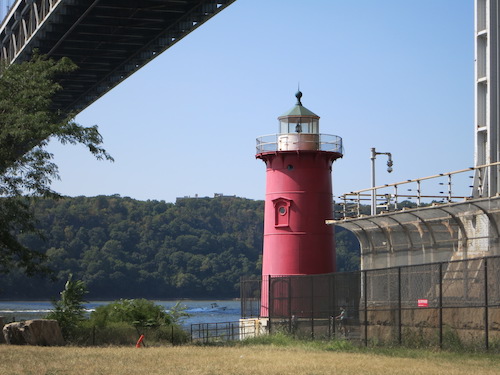
The Little Red Lighthouse, also known as the Jeffrey's Hook Lighthouse
I didn't realize the lighthouse stood in a separate park until I recalled reading in the papers a few years ago about a Revolutionary War redoubt that was said to lurk in the scraggly woods under the Manhattan side of the George Washington Bridge – in Fort Washington Park. Of course, we had to see it.
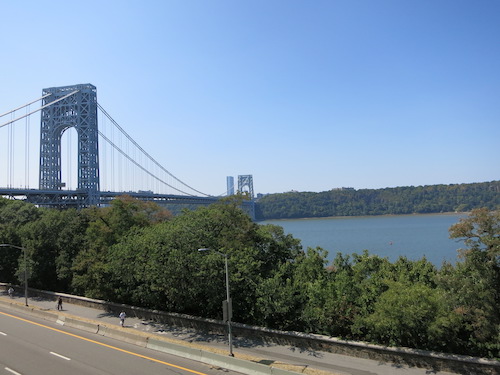
Fort Washington itself was on higher ground, the highest point in Manhattan in fact, where Bennett Park is today. There are no remains of the fort visible there. But Washington's troops needed a spot closer to the river, someplace in weapons range of British ships passing up the Hudson. So they built an earthworks – a redoubt – from which they could fire on the river in relative safety. This redoubt is still there.
You'd think the sole remaining Manhattan relic of the War for Independence would be a much-visited attraction. But it's hidden away at the end of an unmaintained trail through a woods littered with trash presumably thrown from the Great Grey Bridge. To get there we entered Fort Washington Park on its eastern side, by Riverside Drive.
I took the above photo of the bridge from the little observation deck atop the old wall in the next photo. The graffiti-bedecked staircase is blocked off and overgrown. I guess we irresponsible New Yorkers couldn't be trusted on it.
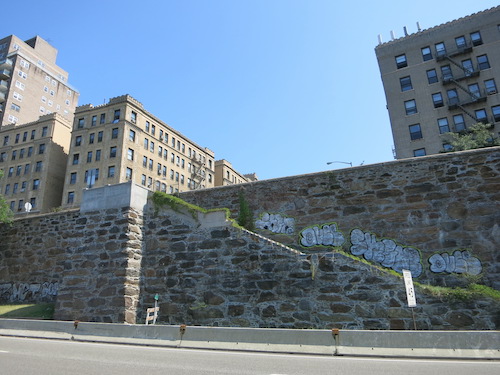
You can enter the park across Riverside Drive.

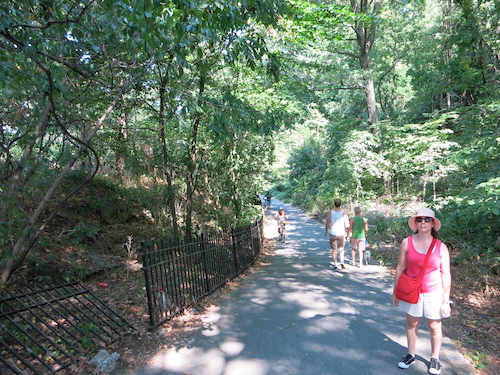
A wooden footbridge takes you over the train tracks into the main body of the park.
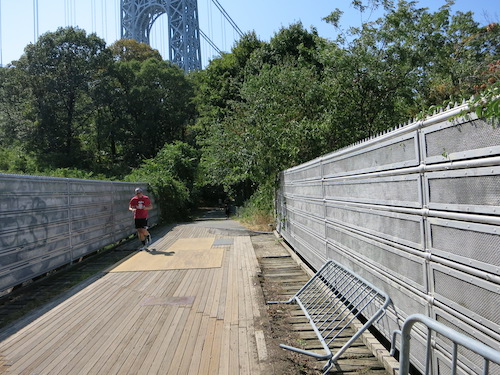
Then as you walk along the main path, almost before you know it you'll come upon the trail to the redoubt, on your left. Provided you're looking for it, that is. If not, you'd probably walk right by.
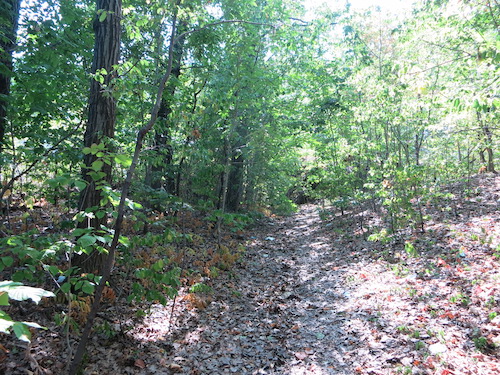
After walking alongside the tracks for a short distance you come to a big boulder.

Fortunately you don't have to scramble up it. This Newsday article from 2011, which gives a good quick summary of the wartime history of the site and environs, said you have to "climb a large rock by scaling its left side," but you don't actually have to rock-climb. Just walk around to its left and scramble up to the top via a steep trail.
And there it is: the redoubt! The Daughters of the American Revolution topped it with a memorial pillar of unworked stone way back in 1910.
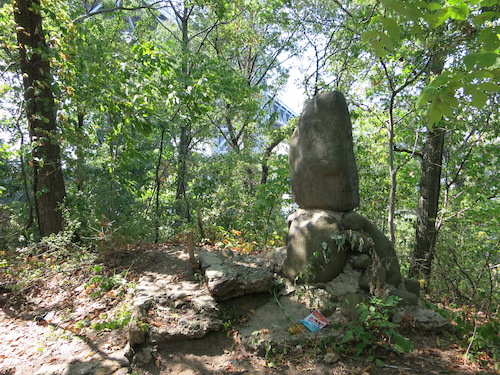

The monument reflects an obsolete spelling of the word: "redout." From the Latin reductus, "a secret place, a refuge," the word is documented in the OED dating back to 1608, spelled "redoubt." The spelling without the "b" seems to have been an alternate spelling all along, but no longer in use in modern times. (As to how the English word "doubt" got a "b" in it in the first place, that's a subject for another day, and a completely different blog – one I'd love to write given infinite time.)
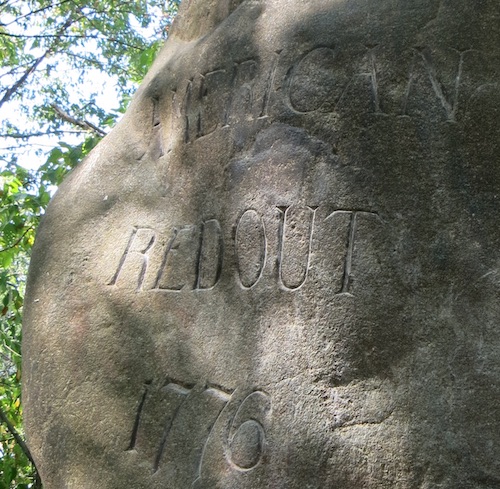
Peering through the trees at the Hudson River, I could envision the troops keeping watch for British boats, ready to take aim if need be.
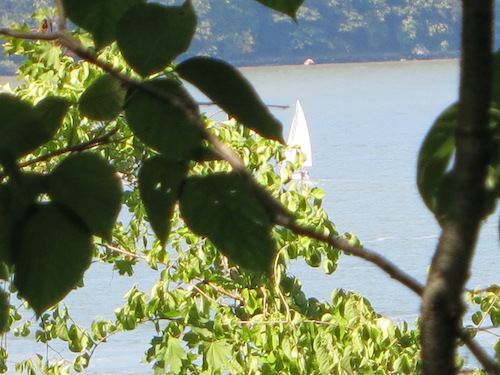
No, it's not a very big site. But shouldn't it be more publicized? More visited?
I actually have mixed feelings about that. There's something fun about tracking down nearly-forgotten sites with historical significance, places sought only by explorers and history buffs. It's also nice to find, in our litigious and hyper-regulated mommy-state, something ill-maintained yet still accessible. I almost hesitate to post this on the blog, fearing to draw harmful attention to the site.
But only almost. And so, climbing back down to the main path, we made our way through the park to the Little Red Lighthouse and then headed south through the remainder of Fort Washington Park and along the Hudson River Greenway.
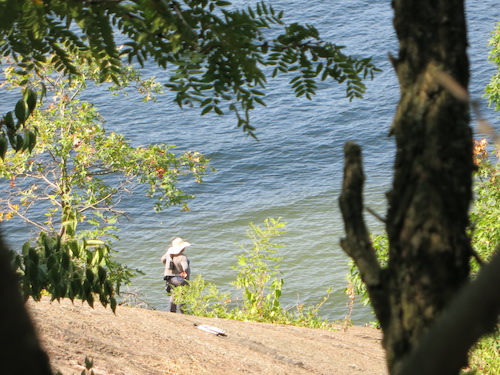

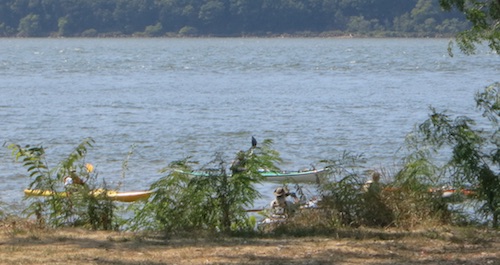
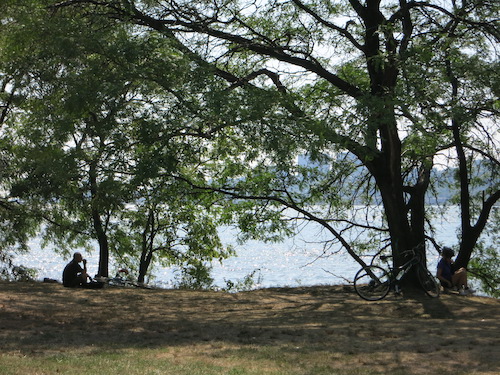
I'm not sure where Fort Washington Park ends, but the tennis courts seem to be within its confines. Then, at some point, you're just on the Hudson River Greenway.
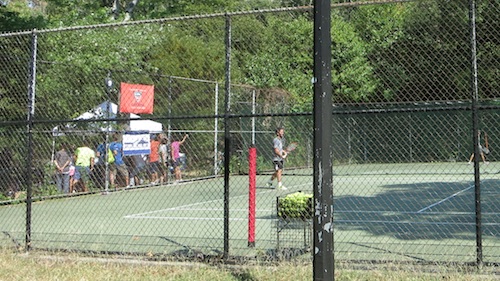
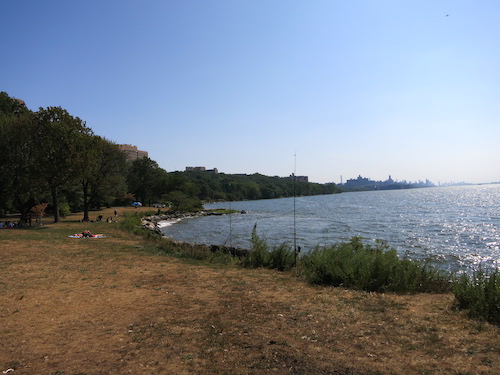
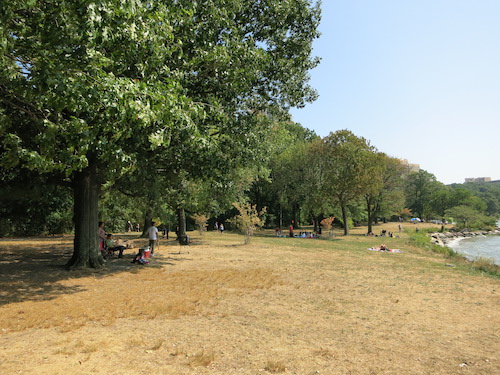

The George Washington Bridge looks majestic from any vantage point.
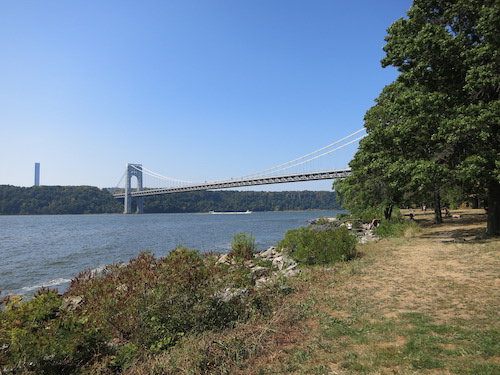
But my final impression before we headed out of the park at 158th Street to find lunch in the southern reaches of Washington Heights – everything up here's named after the Father of Our Country, you'll notice – was of the greenery hanging over the railroad tracks. It looks like you could almost be in a rain forest.
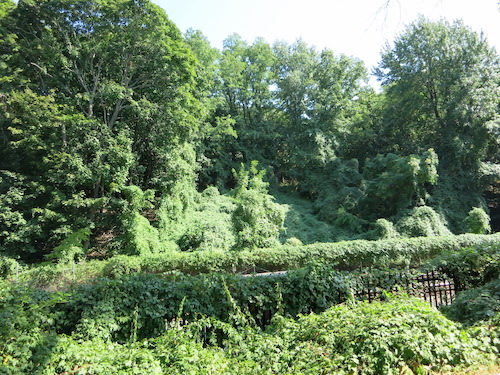
All photos © Jon Sobel, Critical Lens Media
My father took me to this site in about 1976 when I was 14 years old. Embedded in rock was a large eyelet, which to me was the most impressive aspect of the "redoubt" It was used to anchor a ship or ships to shore. Very big 200-year-old, metal eyelet
ReplyDelete